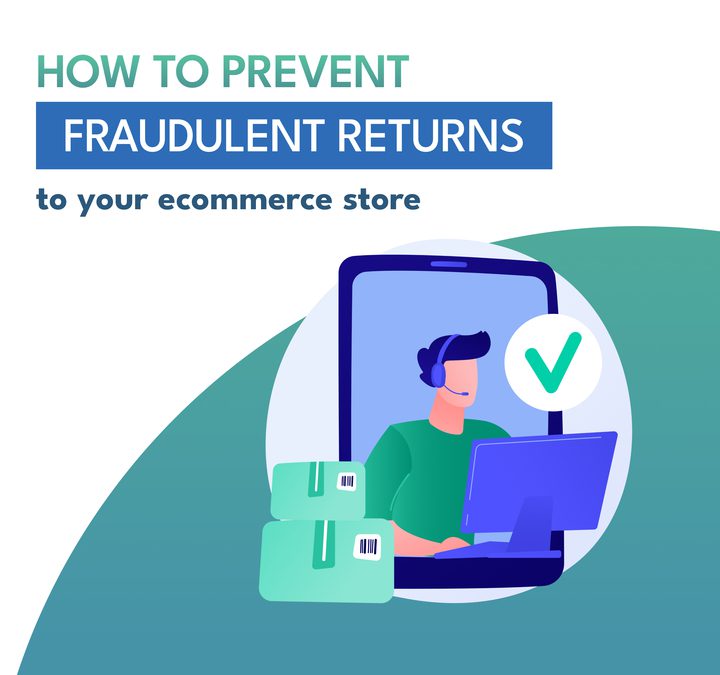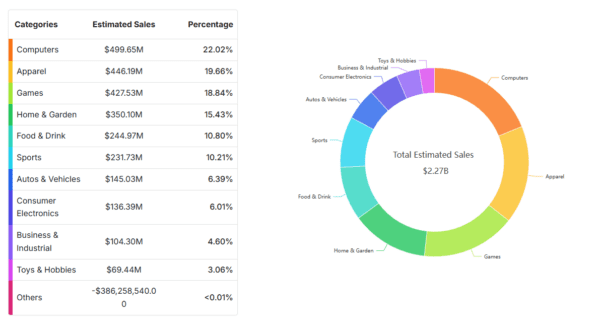
Fraudulent returns can be a major headache for ecommerce store owners, leading to financial losses, inventory discrepancies, and a negative impact on customer trust. As an online seller, it’s essential to implement robust strategies to prevent and mitigate fraudulent returns.
Ecommerce fraud is a growing problem, and fraudulent returns are a major component of that. According to a report by the National Retail Federation, fraudulent returns cost retailers an estimated $20 billion per year.
There are a number of different types of fraudulent returns, but some of the most common include:
Item not as described: This is the most common type of fraudulent return. In this case, the customer claims that the item they received was not as described on the website. However, in reality, they may have simply changed their mind about the item and are trying to get a refund.
Damaged or counterfeit items: In this case, the customer returns an item that is either damaged or counterfeit. They may have damaged the item themselves in order to get a refund, or they may have purchased a counterfeit item from a third-party seller.
Returned without authorization: This is when a customer returns an item without first obtaining a return authorization number from the retailer. This is a red flag for fraud, as it is often done by people who are trying to return items that they have not actually purchased.
In addition to the types of fraudulent returns listed above, there are a number of other ways that fraudsters can try to take advantage of your ecommerce store’s return policy. Some of these methods include:
- Returning multiple items at once: This is a common tactic used by fraudsters to try to overwhelm your customer service team. By returning multiple items at once, they make it more difficult for you to investigate each return individually.
- Returning items that are not yours: This is another common tactic used by fraudsters. They may steal items from other stores and then try to return them to your store for a refund.
- Returning items that have been altered: In some cases, fraudsters may alter items before they return them. For example, they may remove the tags from an item or damage the packaging. This makes it more difficult for you to determine whether the item was actually purchased from your store.
- Returning items with a different tracking number: This is a more sophisticated type of fraud. In this case, the fraudster will return an item to you with a tracking number that does not match the item that they actually returned. This makes it more difficult for you to track the item and identify the fraudster.
In this blog, we will delve into the intricacies of combating fraudulent returns, focusing on actionable steps specifically tailored for medium and large scale sellers.
Understanding Fraudulent Returns: Fraudulent returns refer to the practice of intentionally misusing the return process for personal gain. These returns can encompass various deceptive tactics, such as wardrobing, stolen packages, counterfeit product returns, and product swapping. By familiarizing yourself with these types of fraudulent returns, you’ll be better equipped to identify and prevent them.
Implementing a Fraud Prevention Strategy: Preventing fraudulent returns requires a comprehensive strategy. Start by establishing clear return policies that outline eligibility, conditions, and procedures for returns. Implement robust customer verification processes to minimize the risk of fraudulent claims. Secure packaging and tracking methods can help ensure that returns are received in their original condition. Installing video surveillance systems can act as a deterrent and provide evidence in case of fraudulent returns. Finally, reviewing historical data and patterns can help identify suspicious trends and behaviors.
Leveraging Technology to Prevent Fraudulent Returns: Technology can play a vital role in detecting and preventing fraudulent returns. Utilize fraud detection tools that analyze various data points to identify potentially fraudulent activities. AI-powered risk analysis can help identify patterns and anomalies that human eyes might miss. Address Verification Systems (AVS) can validate customer addresses, reducing the risk of false claims. Integrating fraud prevention APIs into your ecommerce platform can provide real-time fraud assessment and help automate fraud prevention processes.
Effective Communication and Customer Service: Maintaining open and transparent communication with customers is crucial in preventing fraudulent returns. Clearly communicate your return policies to set customer expectations and minimize misunderstandings. Educate customers on your policies, procedures, and the importance of accurate return claims. Monitor customer feedback and reviews to identify potential issues and address them promptly.
Offer store credit or gift receipts instead of cash refunds: Fraudsters are often more interested in getting cash than they are in getting a refund for an item. By offering store credit or gift receipts instead of cash refunds, you can make it less attractive for fraudsters to try to return items to your store. (This might not be available in all cases – for well verified returns, you might as well choose to return the money in cash).
Educate your customer service team: Your customer service team should be aware of the different types of fraudulent returns and how to identify them. They should also be able to answer customer questions about your returns policy and process. Having a robust and active customer service who is genuinely concerned about the customer’s experience but at the same time is vigilant enough to ensure you do not become a victim of fraudulent return is an advantage.
Collaboration with Shipping and Logistics Providers: Partnering with trusted shipping and logistics providers can help enhance your fraud prevention efforts. Choose carriers with robust tracking systems and reliable delivery confirmation methods. Insured shipping options and requiring signature confirmation can add an extra layer of protection against fraudulent returns. Establish communication channels with shipping partners and coordinate with law enforcement agencies when necessary.
Use fraud detection software: There are a number of fraud detection software programs available that can help you to identify fraudulent returns. These programs use a variety of factors to assess the risk of fraud, such as the customer’s purchase history, their IP address, and the shipping address. Even though it might seem like an added cost as of now, you will soon realize how important this tool could come in handy when trying to resolve these issues.
Handling Potential Fraudulent Returns: Now here comes the tricky part on which you should have clear procedures set up in the company beforehand. When you suspect a fraudulent return, document the return process meticulously. Keep detailed records of communication, tracking numbers, and any evidence supporting your suspicion. Conduct thorough investigations, including reviewing order history, verifying shipping addresses, and examining product condition upon return. Implement a process for blacklisting repeat offenders to protect your business from ongoing fraudulent activities.
Continuously Evaluate and Improve Your Fraud Prevention Measures: Fraudulent tactics are ever-evolving, so it’s essential to continuously evaluate and improve your fraud prevention measures. Stay updated on the latest fraud trends and industry best practices. Regularly assess the effectiveness of your strategies and make necessary adjustments. Encourage feedback from your team and customers to identify areas of improvement.
Final Thoughts
Conclusion
Preventing fraudulent returns is vital for the success and sustainability of your ecommerce store. By understanding the types of fraudulent returns, implementing a robust prevention strategy, leveraging technology, maintaining effective communication, collaborating with shipping providers, and continuously evaluating and improving your measures, you can significantly reduce the risk of fraudulent returns and protect your business. Stay proactive, stay vigilant, and safeguard your ecommerce store’s reputation and financial stability.


















